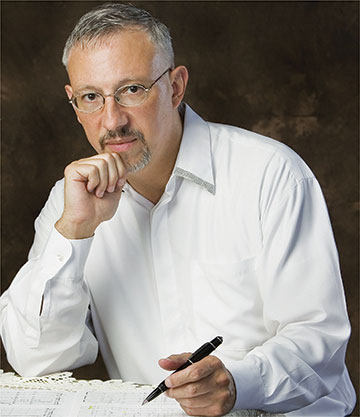Dancing With the BPO
by Jan Jezioro

The orchestra celebrates dance with a world premiere
There are premieres and then there are world premieres. Buffalo Philharmonic Orchestra music director JoAnn Falletta has done an outstanding job in this year’s classical series concert season of introducing for the first time in the orchestra’s long history works that have never been performed at Kleinhans Music Hall. Besides mainstream classical works lost in the shuffle of time and chance, two weeks ago Falletta gave us the American premiere of Eurydice, A Serenade for Strings, American composer Russell Platt’s exquisitely evocative take on the most irresistible ancient Greek myth for modern composers.
The BPO concerts this weekend, under the baton of JoAnn Falletta, on Saturday May 10 at 8pm and Sunday May 11 at 2:30pm, are very special, since they will feature the world premiere of a new concerto by the Uruguayan-born composer Miguel del Aguila commissioned by the orchestra for its principal cellist, Roman Mekinulov. BPO audiences have already had a taste of the music of Miguel del Aguila, the prolific, now California-based composer, three years ago, when his vividly dramatic tone poem The Fall of Cuzco, dealing with the demise of the Inca Empire, shook things up at Kleinhans. His return is eagerly anticipated by many classical music lovers and the occasion should be all the more remarkable since the composer himself will take the stage with the orchestra to play the piano part of his own work.
“In 2012 Roman Mekinulov suggested to me the idea of writing a concerto in tango form that would explore the less classical sound and technique of the cello,” says del Aguila. “I liked this idea, as the cello has the intensity and expressivity of a tango singer and is an excellent medium for such a work.”
The vast new generation of lovers of tango worldwide would pretty much agree that they were initially drawn to the dance form through contact with the widely popular tango nuevo style of the late Argentine composer Astor Piazzolla. Miguel del Aguila explains, however, that there is more to the story: “While most people associate the tango idiom with the 1920s Valentino films or the tango nuevo of [Astor] Piazzolla, to many of us who grew up in Montevideo or Buenos Aires in the ’50s and ’60s, the tango has a very different connotation. It is associated with childhood memories of happy and prosperous times and with happy family gatherings where we as children often just enjoyed watching everyone dance together. In that context, the tango carries a special nostalgia from that time and place in a society that no longer exists. Those were the times before the economic collapse of the ’70s and the horrors of the Guerra Sucia of the military dictatorships that followed. The imagery of these events is portrayed within the music of Concierto en Tango.
“Rather than limiting myself to this style, I also included idioms from earlier tango styles, including the 19th-century Spanish tango-habanera, the Brazilian tango/maxixe, and the early milongas of the late 19th and early 20th centuries, in which the African influence was still evident in its syncopations and fast beat. However, Concierto en Tango has a rhythmic complexity beyond any of these dances, and it represents my abstraction of those rhythms as they fuse with my own personal style.
“The harmonic language is very conservative. I deliberately tried to avoid a classical sound and especially the overly-romantic, dramatic style of the many concertos from the standard repertoire of the cello. Concierto en Tango was written to honor the memory of my brother, Nelson del Aguila (1964-2012).”
Maurice Ravel described his 1919 work La Valse, which bears the subtitle of “A Choreographic Poem for Orchestra,” in his preface to the score: “Through whirling clouds, waltzing couples may be faintly distinguished. The clouds gradually scatter: one sees at letter A an immense hall peopled with a whirling crowd. The scene is gradually illuminated. The light of the chandeliers bursts forth at the fortissimo letter B. Set in an imperial court, about 1855.”
While Ravel explicitly denied any connection between the ultimately tragic finale of work and the situation in post-World War I Europe, the present day listener may find it difficult not to make that connection as the centenary of that catastrophe approaches this August.
Segei Rachmaninoff composed his final work, the three movement orchestral suite Symphonic Dances, Opus 45, in 1940. The work combines lushly harmonic and rhythmically energetic sections with musical quotes from the composer’s earlier works, including his First Symphony, whose critically savaged premiere resulted in his mental breakdown. The final movement features a struggle between the forbidding Dies Irae theme, and the ultimately victorious Resurrection theme from his 1915 All-Night Vigil.
blog comments powered by Disqus|
Issue Navigation> Issue Index > v13n19 (Best of Buffalo, Week of Thursday, May 8) > Dancing With the BPO This Week's Issue • Artvoice Daily • Artvoice TV • Events Calendar • Classifieds |









 Current Issue
Current Issue